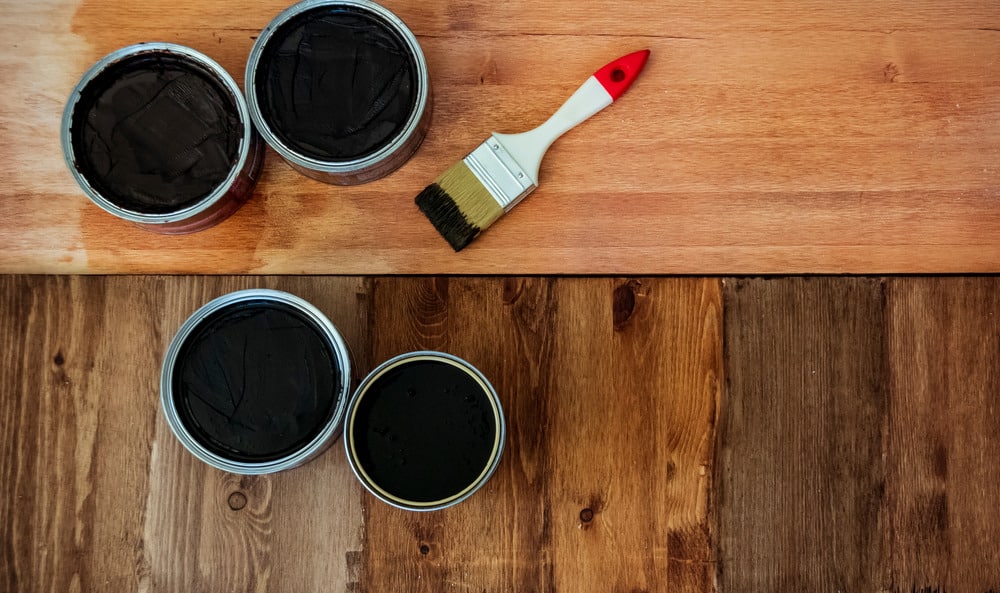Pressure-treated wood is a durable and common material used for outdoor projects like decks, fences, and patios. But when it comes to painting or staining it, many homeowners are unsure if it’s even possible or worth the effort. In this blog, we will take a look at everything you need to know about painting or staining pressure-treated wood.
What is Pressure-Treated Wood?
Pressure-treated wood is lumber that has been treated with chemicals to protect it from rot, insects, and moisture damage. This treatment makes it an ideal choice for outdoor structures that are exposed to the elements. You will often see it used in decks, garden beds, retaining walls, and fences. While the wood is built to last longer than untreated wood, it does require special care. The chemicals used to preserve pressure-treated wood can affect how coatings adhere to it.
Is Painting or Staining Pressure-Treated Wood Recommended?
You can paint or stain pressure-treated wood, but it must be done the right way. The most crucial factor is making sure the wood has enough time to dry completely. Fresh pressure-treated wood holds a lot of moisture from the treatment process, and if you apply paint or stain too soon, it will peel or fail to stick to the wood. A good way to check if your wood is ready is to sprinkle water on the surface; if it absorbs quickly, it is dry enough.
Once the wood is ready, you should use a primer that is designed specifically for pressure-treated wood, followed by a compatible exterior-grade paint or stain. Choosing products labeled for use on pressure-treated surfaces is essential because they are formulated specifically for this type of wood.
When Can You Stain or Paint Pressure-Treated Wood?
The right time to stain or paint pressure-treated wood depends on how the wood was treated and the weather conditions around you. In general, pressure-treated wood needs at least a few weeks to dry out thoroughly before it’s ready for any type of coating. Humid climates or rainy weather can extend this drying time. The wood must feel dry to the touch and should pass the water absorption test before you proceed. Trying to paint or stain it while it’s still moist will only lead to frustration.
Staining or Painting Pressure-Treated Wood: A Step-by-Step Process
Now that you know that it’s possible to paint or stain pressure-treated wood, let’s walk through the process step by step to ensure the best results.
Gather the Right Equipment
Before you start, make sure you have all the tools and supplies you need. You will need an exterior primer for treated wood, stain or paint designed for outdoor use, sandpaper, and protective gear like gloves and safety glasses. Depending on the size of your project, you might use a paintbrush, roller, or sprayer for application. Having everything ready ahead of time will make the process smoother and help you avoid unnecessary delays.
Preparing The Wood
Proper preparation is one of the most effective ways to make your paint or stain last longer. Start by cleaning the wood fully with a wood cleaner to remove any mud, soil, mildew, or residue. If the wood is rough or splintered, lightly sanding it will help smooth the surface and improve adhesion. Make sure the surface is clean and completely dry before you apply any product. Skipping these steps can lead to poor results and will reduce the lifespan of your finish.
Painting or Staining The Wood
Once the surface is prepped, apply your primer if you are painting. Priming creates a base that helps paint bond properly and protects the wood. After the primer dries, apply one or two coats of exterior-grade paint. If you are staining, use a brush or sprayer to apply the stain evenly, following the grain of wood. Avoid applying too thick a coat, as this can cause pooling and uneven coverage. Be patient and let each layer dry evenly before applying your next coat.
Choosing The Right Type of Paint or Stain
Not all paints and stains work well with pressure-treated wood, so you need to choose the right product. For paint, look for latex-based formulas explicitly made for exterior painting and pressure-treated surfaces. These paints allow the wood to breathe and help prevent peeling or cracking. For stains, opt for products that are also labeled for use on treated wood. Stains that penetrate the wood rather than sit on the surface will last longer and offer better protection. When you use the wrong type of product, it can result in poor adhesion, early wear, and waste.
Should I Paint or Stain Pressure-Treated Wood?
Whether you paint or stain depends on your needs and preferences. Staining is often recommended because it allows the wood to expand and contract more naturally with changing weather. It also tends to last longer and requires less maintenance over time. Painting gives you more color options and a more finished look, but it may require more upkeep. If the wood is older or weathered, staining is usually the better option. If you are aiming for a bold color or a polished finish, painting may suit you better, as long as you follow the proper steps.
Best Practices
To get the best finish, always wait for the wood to dry thoroughly before starting your project. Don’t skip cleaning or sanding the surface, even if it looks clean. Use products specifically made for pressure-treated wood, and always follow the manufacturer’s instructions about drying times and application. Apply coatings during dry, mild weather, and avoid painting or staining in direct sunlight or on very humid days. Most importantly, take your time. A rushed job will not last, but careful preparation and application can make your work look great for years to come.
Summary
Painting or staining pressure-treated wood can be done, but only if you approach it the right way. You will need to wait until the wood is dry, prepare it properly, and use the right products. So, whether you decide to paint or stain, your results will depend on how well you prepare and apply your materials. With some patience and the correct techniques, you can protect your wood and give it a beautiful and long-lasting finish.











